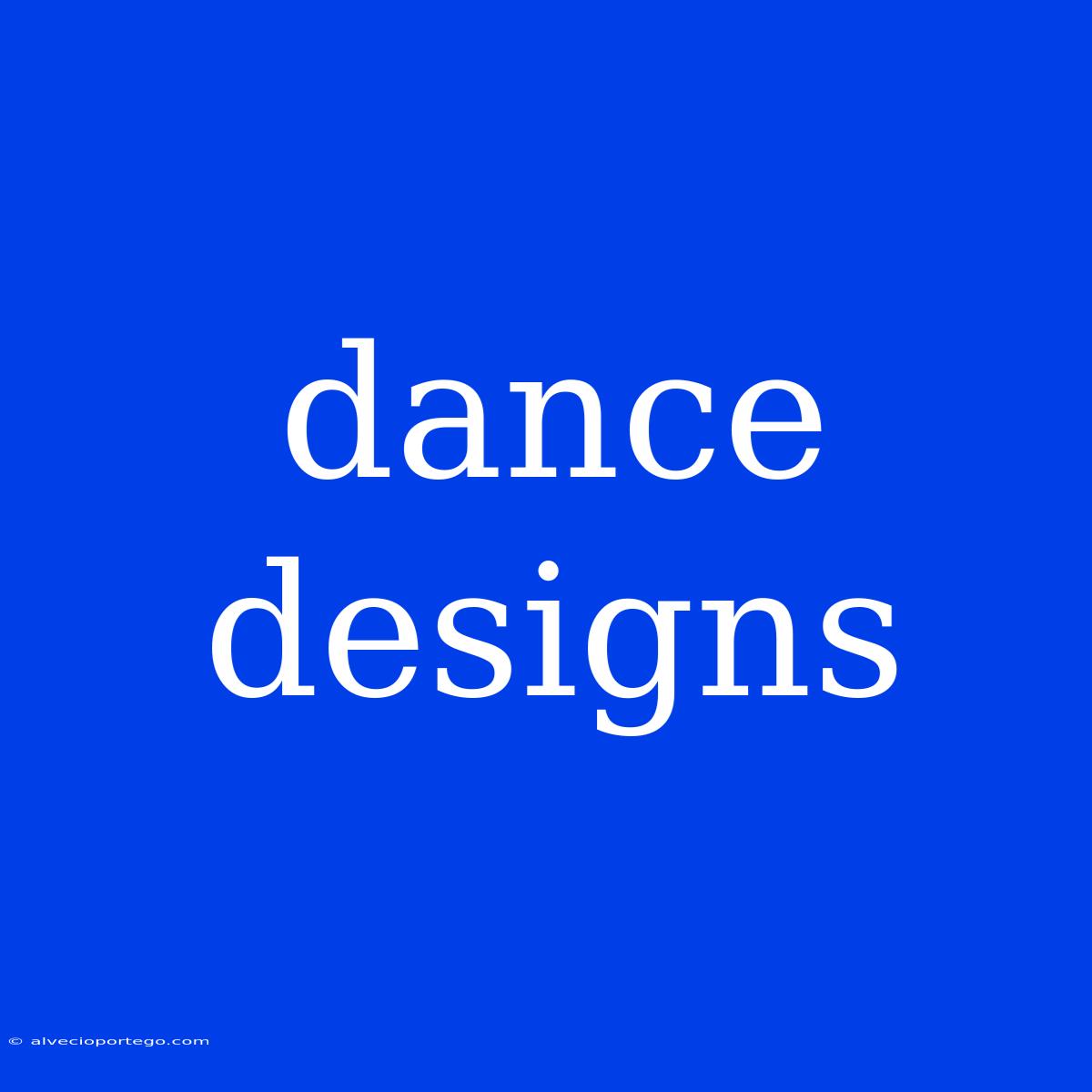Dance Designs: A Symphony of Movement and Visual Art
Dance, in its purest form, is a vibrant language of the body. But beyond the fluid motions and expressive gestures lies a fascinating world of dance designs, where choreography transforms into intricate visual patterns and captivating artistic statements.
Beyond Choreography: A Visual Language
While choreography focuses on the order and flow of movements, dance designs elevate these movements into a visual art form. The stage becomes a canvas, the dancers' bodies become brushstrokes, and the lighting, costumes, and props create a dynamic interplay of colours, shapes, and textures.
Exploring the Elements of Dance Designs:
1. Spatial Patterns: The arrangement of dancers on stage creates geometric shapes, lines, and formations, building visual interest and guiding the audience's eye. From symmetrical formations to asymmetrical lines, the way dancers occupy space influences the overall impact of the design.
2. Movement Flow: The choreography itself contributes to the design. The flow and direction of movement, whether in unison or in counterpoint, create visual rhythms and patterns that weave through the space.
3. Costume and Lighting: Costumes and lighting play a vital role in defining the visual language of a dance design. The colours, textures, and silhouettes of costumes, combined with the strategic use of light, can highlight specific movements, create moods, and enhance the overall aesthetic.
4. Props and Set Design: The integration of props and set design further enriches the visual experience. Props can be used to create focal points, symbolize themes, and extend the dancers' movements, while set design provides the context and atmosphere for the performance.
Examples of Dance Designs:
- Ballet: Classical ballet, with its focus on precise movements and elegant costumes, often features elaborate and symmetrical designs. The grand pas de deux, for example, often showcases the beauty of the human form through intricate patterns and dynamic poses.
- Modern Dance: Modern dance embraces a more fluid and expressive approach to movement. Designs in modern dance often focus on creating a sense of flow, utilizing contrasting lines, and exploring unconventional stage use.
- Contemporary Dance: Contemporary dance embraces a wide range of styles and themes, resulting in diverse and innovative dance designs. From minimalist aesthetics to highly theatrical concepts, contemporary dance designs push the boundaries of visual expression.
The Impact of Dance Designs:
Dance designs not only enhance the visual spectacle of a performance but also contribute to the emotional impact and storytelling potential. They create a deeper connection between the dancers, the audience, and the intended message. By carefully manipulating visual elements, choreographers can evoke a wide range of emotions, from joy and excitement to sadness and contemplation.
Conclusion:
Dance designs are a testament to the versatility of dance as an art form. They demonstrate that movement can be both expressive and visually captivating, drawing the audience into a world of aesthetic beauty and emotional engagement. As we continue to explore the possibilities of dance designs, we will undoubtedly witness even more breathtaking and innovative expressions of the human spirit through movement.

